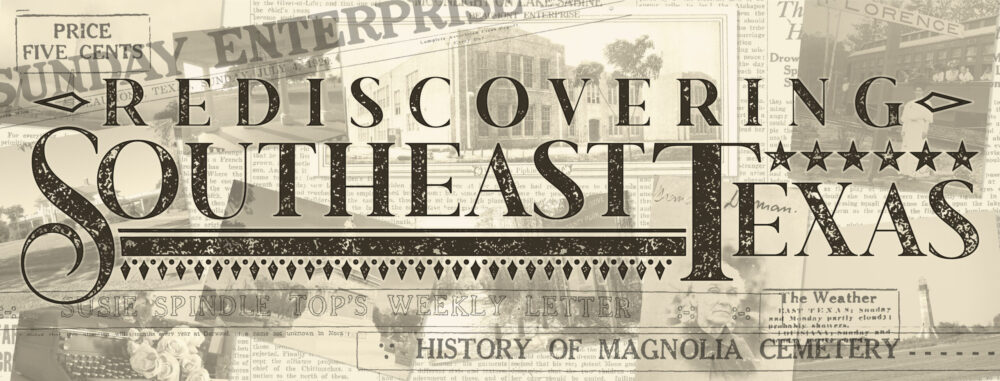
I hope everyone survived the “Snow Cone of Uncertainty” this week. I saw that Doomsayer, Jim Cantore from The Weather Channel, was in Houston. I guess he’s slipping because nothing says #Armageddon ice and tragedy like Interstate 10, especially East Bound through Louisiana, but gumbo fixes all bad weather. I think all of I-10 was closed from Lake Charles to the Mississippi border. Of course, Houston gave him a show, and Beaumont was no better Tuesday evening.
We fared well Under the Oakes on Ye Olde Block Farm. I believe the count is around three inches of snow near the street but around eight inches around my trailer, my work truck, and between the garages and fences. Apparently, snow drift loves my trailer and the back of my trucks.
While I was at Magnolia Cemetery this week, the name C. C. Caswell, along with a few other ex-mayors of Beaumont, came up in conversation. Christopher Columbus “C. C.” Caswell was mayor of Beaumont from April 1882 to August 1883. I found a separate story connected to him in 2012 while working for Oiltanking on Amoco Road. Someone had pointed out a grave in a field about 100 yards from Highway 347. Of course, this got my attention! It turns out the grave belonged to Elisha Brewer.
Elisha Brewer was the grandson of Christian Hillebrandt, a cattle baron, after whom Hillebrandt Bayou was named. His wife Mary was the granddaughter of John Sparks, the first settler and founder of the Sparks settlement (Aurora), which was the precursor to the city of Port Arthur.
It is unclear why Elisha O. Brewer had been buried in what would have been his backyard. I’ve heard several theories, but most likely, the decision was made out of convenience for the family. Whatever the reason, we can assume from the words on his gravestone that he was deeply missed:
Since thou canst no longer stay
To cheer me thy love
I hope to meet with thee again
In yon bright world above.
Elisha O. Brewer
February 2, 1852 – August 5, 1883
I found a W. T. Block article, to which I will leave a link at the bottom of this blog, telling the story of Elisha O. Brewer. After visiting the deathly ill mayor of Beaumont, C. C. Caswell, Elisha had been unharnessing his wagon when his horse had kicked him in the groin. Elisha died a short time later. He was 31.
C.C. is buried on the hill at Magnolia Cemetery near Robert Kidd. The life of Mr. Kidd is another interesting story Judy Linsley shares during our Annual Cemetery Tour in October. Robert lived to be 116 years old, and family tradition states that he had farmed his land by himself until he was nearly 100.
I guess the “convenience” of Mary Brewer burying her husband on their land isn’t the only recorded history of that area. Sebron Berry was also buried on what was his land, at Smith Bluff near the Neches River, which is now Sunoco. However, his grave may have been part of a bigger cemetery, compared to the lone grave of Mr. Brewer. Yet another cemetery in this area, the Sparks Cemetery, was located on Dupont land. The 30 graves were moved in the 1950s to Forest Lawn Cemetery in Beaumont before Dupont built its refinery. I know this because I researched this cemetery back in 2013.
2013 was the 150th anniversary of the Battle of Sabine Pass, and a big event commemorated the battle. Knowing the story of Kate Dorman and the two Sarahs, I of course wanted to find the two Sarahs. I know where Kate is. She’s in Sabine Pass, and I did find Sarah Ann King Court, who was buried in Sparks Cemetery but is now in Forest Lawn. I never found out where Sarah Vosburg is because I think she had left the area. If you’ve never heard of Kate Dorman and the two Sarahs, I’ll leave a few links to the works of W. T. Block. The three women had turned Kate’s hotel into a makeshift hospital to treat those with yellow fever during the Civil War.
Well, that’s it for this week, but be sure to stay tuned to the Facebook page. On the 28th, I’ll be sharing a special post on Susie Spindletop.
Until next time.


You must be logged in to post a comment.